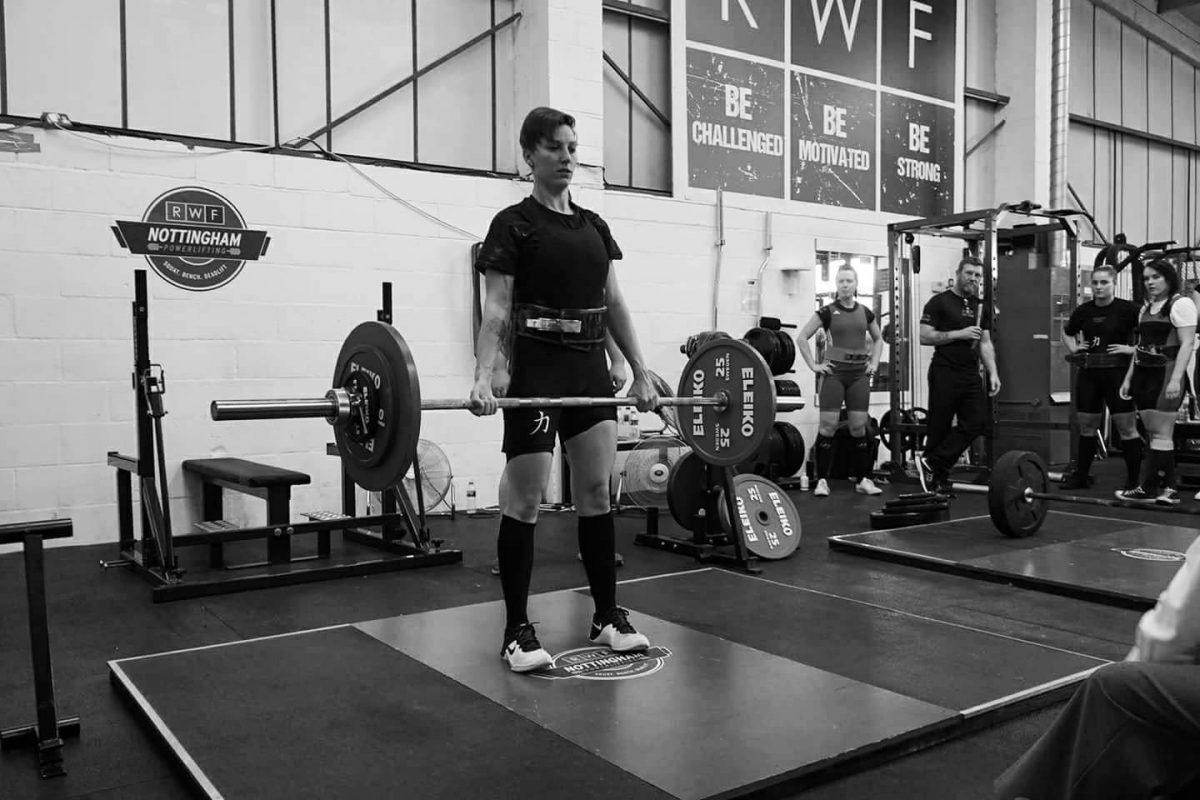Powerlifting isn’t something people expect me to say when they ask me what type of training I do. Getting in to powerlifting is one of those things that just happened.
Competition
My first powerlifting competition was last month in June and my training regime started around Christmas time. I had to adapt my current training with strength and hypertrophy training sessions. This involved sessions with low reps (typically 1-6) and heavy weights alongside sessions with lighter weight and increased reps (8-12). This style of training really helps build both strength and muscular endurance. This is essential to prepare the body for strength training.
I knew I had some obstacles in my way and some areas I really needed to improve on; with the key one being flexibility. For a squat in a powerlifting to count you have to be able to squat below parallel and I could only just reach parallel. I adapted my training to include far more stretching; both thoroughly before and after my sessions using a combination of dynamic stretching, developmental stretching and foam rolling and mobility exercises. This would also help my muscles recover better and improve my range of motion and flexibility.
Preparation
One of the most important parts of my preparation was to have a one rep max day, where I tested my maximum strength for 1 rep. As I got stronger and the weight got higher and the competition time got closer I adopted a more scientific formula based on percentages to my training. For example; my 1 rep max is 100kg, but I would vary it from 65-80% of this weight with the number of rep ranging from 3-7 until my next 1 rep max text which was usually every 4 weeks. This would prevent me from fatiguing and keep progressing as the weight would change per percentage.
My technique was also an obstacle as I have a lifelong injury that causes my leg to rotate inwards. This could jeopardise my squat and deadlift as during a powerlifting meet there are strict technique rules that you must meet or your lift won’t be counted as part of your end score, so a lot of rehab was included in my training. Your end score is the total of your heaviest weight in each lift. The winner is the person who achieves the highest score in your weight category.
Event
When June arrived it really hit me that I was going to be competing and nerves were building up. I wasn’t confident at all, in fact I wasn’t even happy with my weight on my lifts as I know I can do better. The day arrived and I just felt sick! Men and women were split into different categories. The women competitors weighed in first to establish which weight category we would be competing in. Everyone was feeling uncomfortable and nerves were running extremely high. We had to do our lifts in front of two judges, upon their command signals, and they would be the ones to approve our lift.
The day was not what I imagined at all, and despite my anxieties the atmosphere was amazing! Everyone supported each other, and everyone wanted to simply do their best, not to win but to challenge themselves. The added incentive of cake, doughnuts and ice cream in between lifts helped too!
And just in case you were wondering, I made it in to the 58kg weight category. My highest squat was 85kg, highest bench was 55kg and my highest deadlift was 107.5kg, which qualifies me for national competition next February. Happy days!
The day was an amazing experience; I would more than recommend it if you are looking for something different, and challenging. I did all my training here at Kimberley Leisure Centre, if you want to ask me any questions or book in with me for a weights programme, all abilities welcome, please just ask!
Nicola, Fitness Advisor, Kimberley Leisure Centre




